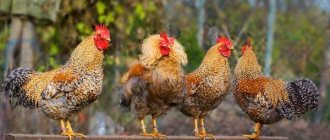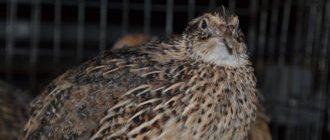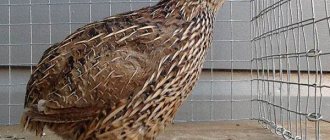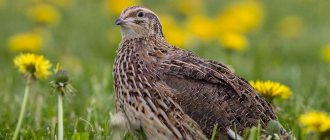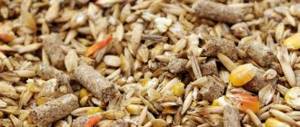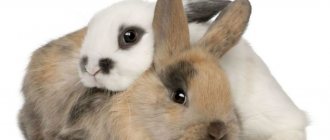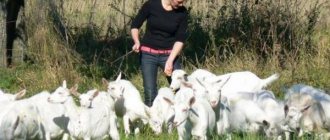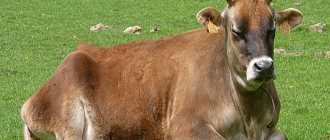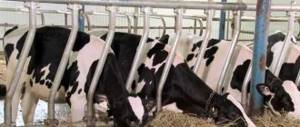Egg-oriented quail
Egg products will be of interest to those people who want to take care of both their health and the health of their loved ones. Here the question does not arise about how much meat you can get, only the number of eggs is interesting, preferably in as large a quantity as possible.
Japanese quail
The breed can be considered one of the most popular in terms of eggs. In addition, the Japanese serve as the highest standard for other species, by which all sorts of indicators are compared.
Males weigh on average about 120 grams, females are somewhat larger and can gain weight up to 150 grams. If favorable conditions are created, the first eggs from females can be obtained at one month of age. The products are small in size and weigh on average about 11 grams. The period of active egg production is approximately 12 months, then sharply decreases several times.
The Japanese breed has a number of significant useful qualities:
- unpretentious to living conditions;
- good immune system;
- young animals quickly gain weight and by the 40th day they catch up with the weight of their parents;
- from the 20th day it is easy to distinguish a male from a female. This is facilitated by the color of the breast feathers. Males are brown in color, while females have black spots on a light tone.
The main disadvantage cited by poultry farmers is their low weight, which makes the birds unsuitable for slaughter for meat. But the breed is ideal for those who value egg production.
Japanese quail
Marbled quail
For lovers of exotic birds, marble breed is suitable. It is completely similar to the Japanese in terms of productivity, but they are distinguished from their counterparts by their unique appearance.
The breed is the result of a mutation and was bred by our specialists. The result was birds with an original light gray coloration, with red specks scattered throughout. This subspecies has a large number of color variations, such as white, gold, etc. This quail is best suited for decorative keeping.
Marbled Quail
English white quail
The breed's homeland is in the UK, and domestic bird lovers became acquainted with them only in 1980. The English White is one of the promising breeds, ideal for breeding in industrial conditions. Thanks to the white plumage, the skin has a pink color, which makes the carcass attractive to consumers.
In terms of live weight, the birds are somewhat superior to the Japanese breed. Quails gain weight up to 160 grams, and quails - up to 180. Thanks to these qualities, birds are used to produce meat products. At the same time, they have good egg production rates. From one female you can get about 280 eggs in 365 days.
English white has become an excellent basis for working with broilers. Thanks to them, European specialists developed breeds weighing about 300 grams.
The English are unpretentious in their maintenance, and they also do not need a special food supply. However, it is best to breed these birds for people who have extensive experience working with birds. This is due to the fact that it is very difficult to distinguish between seven-week-old males and females; by this age the bird reaches sexual maturity. Males have a cloacal gland, which is a pink thickening. Females, of course, do not have it, and the skin next to the cloaca is bluish.
Young English white quail
About incubation
During the selection process, quails lost their brooding instinct. Therefore, incubators are used for breeding them. Fertilized eggs are collected over several days. But the fresher they are, the higher the hatchability percentage. The maximum permissible period is 7-12 days. Place them with the blunt end up and store them in a cool place, but not in the refrigerator.
Before laying eggs, the incubator is disinfected and warmed up. They are ovoscoped for defects in the shell, after which they are also disinfected. Under no circumstances should they be placed in a cold incubator. Also, you cannot incubate cold eggs that were brought into the room from the cold. They should come to room temperature. Otherwise, condensation will appear, which will change the humidity indicators necessary for incubation.
In the first 24 hours, the temperature in the incubator is maintained at 37.8 0 C. The next change in temperature occurs on the 10th day - 37.5 0 C. During hatching and hatching (from the 15th day), 37.4 0 C is maintained.
In addition to the temperature regime, it is necessary to maintain the humidity level.
- 1 day – 65-70%;
- from 2 to 10 – 50-55%;
- from 11 to 15 – 45-50%;
- on the day of withdrawal, on the 17th day – 70-85%.
During the entire incubation process, quail eggs can be turned 3-4 times a day. This is usually done to ensure that the embryo develops normally and does not stick to the wall. The revolution must be stopped on the 15th day. However, according to the descriptions of professionals, there is no particular difference in the quality of the result without a revolution.
In addition, the incubator must be regularly ventilated, starting from the third day and ending on the 16th day. This is usually done 2 times a day while turning the eggs. The duration of ventilation in the first half of incubation is 5 minutes, in the second half – 10 minutes.
During the incubation process, on the seventh day, it is advisable to perform ovoscopy. All eggs with frozen embryos and other pathologies must be removed.
Incubation lasts 17 days. If all the rules are followed, the chicks are born together within 4-6 hours.
Meat and egg direction
These breeds have a very conditional distinction; their breed characteristics do not differ significantly between species.
Manchurian golden quail
First of all, the breed is distinguished by its unusual color. There are specks of yellow and brown color on the light background, which gives a stunning golden tint.
These birds are great for those new to poultry farming. They not only have beautiful coloring, but also good egg production; from one female you can get up to 280 eggs in 365 days. Egg products are large in size and can weigh up to 16 grams. But this is not the only thing that makes the Manchus remarkable. Reaching an average weight of 180 grams for males and 200 grams for females, the birds are excellent for sale for meat. Light plumage gives the carcasses an attractive color.
The breed is unpretentious to living conditions and consumes a small amount of feed, which makes it economically profitable.
Manchurian quail
Estonian quail
It is one of the most popular breeds that are used both in industrial breeding and in private farms. Such gratitude from people to birds is not accidental, because they have many positive qualities:
- eggs are fertilized by 92%;
- good immunity and unpretentious attitude to living conditions;
- young animals are viable and survive well up to 98%;
- precocity;
- the egg production period exceeds that of all known breeds;
- males and females are perfectly distinguished from each other by their color.
Estonian quail
Pharaoh
Pharaoh's laying hen (photo from the farm of Denis Baklanov, 2009) https://www.youtube.com/watch?v=SuKtPXo9_SQ
Read more: How to grow baby tulips
The first to come to us from the meat department. They quickly gained popularity due to their unpretentiousness, high (for broilers) fertilization of the hatching egg and the beautiful appearance of the finished carcass.
According to the description, it is not very different from the Japanese one, the same colors, only the sizes are significantly larger: 290-320 g. in cockerels, and up to 250 in laying hens. The eggs are somewhat larger, but there are fewer of them (up to 280 per year).
Reviews on Pharaohs are often mixed due to the fact that few poultry farmers keep pure lines, so it is not easy to buy a purebred bird.
Meat quail
The meat type can be called the latest in time of creation, in contrast to the egg and mixed types. But recently, broiler breeds have begun to actively develop.
Pharaohs
This breed can be called the only one that was bred in our country. In recent years, it has begun to be replaced by the Texas white. Pharaohs are characterized by large sizes. Quail is capable of gaining a weight of 260 grams, and quail - 320 grams. The breed is also distinguished by a good indicator of egg productivity: from one bird you can get up to 220 eggs in 365 days, there are representatives with higher indicators. The average weight of one egg is about 18 grams.
Young animals are characterized by early maturity; by the 30th day from hatching they weigh about 150 grams.
Pharaohs have several disadvantages, including their demanding maintenance and food supply. Due to the dark plumage, the carcasses lose their commercial quality.
Pharaoh
Texas white
For our country, the breed can be called new, but at the same time it already has a lot of connoisseurs. Texans have other names: white giants, weighted meat, etc.
The average weight for a male is 360 grams, for a female - 450 grams. There are individuals that reach a weight of half a kilogram, from which the percentage of meat product yield is approximately 50%.
The breed has the following advantages:
- excellent performance in terms of live weight and meat yield;
- the carcass has an attractive appearance;
- keeping quails does not cause any trouble to the owner;
- birds have a calm character.
The Texas breed also has some disadvantages:
- low egg production rate;
- low percentage of fertilization of egg products;
- low activity of males during the breeding period;
- determination of gender is possible only with the onset of puberty and after egg-laying begins in females.
Comparative sizes of Californian and Japanese quail
Egg production
Japanese quails begin to lay eggs early and can lay up to 300 eggs at the age of one month to one year. Mute quails begin to lay eggs immediately after feeding. With a feed consumption of 2.5 kg, the output is up to 1 kg of egg mass. Japanese quails should be kept in families - usually 3-4 females and 1 male, hatchability of fertilized eggs - up to 90%, and hatchability - up to 70%. The weight of newly hatched quails is 7-9 g, and after a month they grow to the size of adults due to their rapid growth. Egg-laying quails are slaughtered 9-10 months after the first laying, but before that they are fattened.
Age and weight of Japanese quails:
- 7 weeks – 18-30 g;
- 14 weeks – 38-53 g;
- 30 weeks – 70-95 g;
- 45 weeks – 82-100 g;
- 60 weeks – 120-140 g.
Decorative types
California Crested
Applies exclusively to decorative breeds. Therefore, it is best to talk about the advantages and disadvantages from this side. Among the advantages of the breed, the following qualities stand out:
- the bird has a decorative appearance;
- perfect for aviary keeping;
- no need to purchase specialized food;
- excellent immune system and immunity to diseases.
Of course, the breed has not only advantages. The negative aspects include:
- high cost;
- chicks do not survive well;
- not suitable for meat products;
- A spacious enclosure is required for maintenance. Californians do not live long in cages.
A pair of Californian quails
painted quail
Chinese miniature birds can be considered the most beautiful among all available quail breeds. This bird is suitable only for decorative keeping, because You cannot get enough meat and eggs from it.
Painted quail
There are a number of subtleties in keeping painted quails, and the future owner is advised to familiarize themselves with them before keeping quails at home.
We invite you to join our Zen channel and group on VKontakte or Odnoklassniki, where new articles are published, as well as news for gardeners and livestock breeders.
Similar articles:
- How much weight can quail gain?
- At what age do quails start laying eggs?
- Reduced egg production in quails and control measures
How are laying hens kept?
Quails are heat-loving birds. The optimal temperature for quails is 20 C. When the thermal regime decreases to 18 C, the females' weariness begins to decrease. If the temperature in the poultry house drops to 13 C, then the birds stop laying.
This mode is not normal for quails. The bird does not tolerate increased temperature well. Indicators of 30-35 C are critical for individuals. Quails experience heat stroke and die.
The humidity in the poultry house is maintained at 70%. To do this, the room must be regularly ventilated. In the summer, it is recommended to moisten the walls and floors with a spray bottle.
In winter, when using air heaters, containers with water are placed next to the heater. Individuals are sensitive to polluted air. In the absence of ventilation, the bird begins to get sick, which affects both egg production and body weight gain.
Cages or pens are used to keep laying hens. Poultry farmers claim that when kept in cages, quails produce 10% more eggs than females that are kept on the floor litter. Cage size 75*35 cm, ceiling height 20 cm. It is intended for a small population: 25 females and 5 males.
View this post on Instagram
Posted by @svandr_ferma Nov 12, 2021 at 11:28 PST
The structures are made of mesh with a cell size of 3-5 mm. A garbage tray is installed under the bottom panel. It is washed daily using soap solutions. The floor is made at a slight slope so that the eggs roll in a certain direction.
The slope is brought to the gutter; all its surfaces are finished with soft cloth or linoleum. Feeders and drinkers are placed outside the front door. Drinkers are installed above the feeders.
If the number of laying hens is large, then the cages are lined up in rows. In a private courtyard in the summer, the structures are taken out to the garden plot, under a canopy. A shaded area is found for birds. They cannot tolerate direct sunlight.
Wood sawdust is not used. Birds eat them. They begin to develop pathologies in the gastrointestinal tract. Most often, a blockage of the goiter occurs. Sawdust swells and does not pass through the gastrointestinal tract. Peristalsis of the intestines and goiter is disrupted. Atony develops; the bird requires urgent help and long-term treatment.
Quails are kept on litter in small numbers, no more than 40 individuals. The pen is divided into cells in which bird families of females and males are located. It is recommended to cover the top with a mesh. The bedding is made of hay, wood shavings or peat.
More on the topic: What types of drinking bowls are there for quails?
Feeders and drinking bowls are installed inside the pen or taken outside it. For individuals, containers with sand and ash are provided. Birds will take baths and clean their plumage of insects and dirt. Nests are organized for laying quails. The diameter of the nest is 15-20 cm.
They install plywood boxes and put hay in them. The nests are located on the opposite side of the feeders, in the far corner of the house. To show the female where to lay eggs, dummies of eggs are used.
